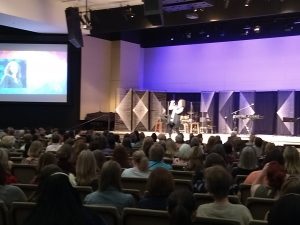I wrote a new article to help churches be more friendly to families on the spectrum. It was picked up by the Christian Post (here) and The Stream (here) and a number of other places. I’m putting the text below in case the links expire:
Five Things Your Church Can Do Now to Reach Out to Families with Sensory and Autistic Spectrum Disorders
There is a major problem in the US that is flying under the radar of most churches. Approximately 1 in 50 children is diagnosed with Autism Spectrum Disorder (ASD), and some sources say the number of children struggling with Sensory Processing Disorder (SPD) is as high as 1 in 20. Many of these families report that they feel unable to attend church because it’s too hard for their children or they feel unwelcome. When I talk to parents about their experience, they tell heartbreaking stories of being kicked out of churches for being disruptive or just feeling the struggle is too great. They feel lonely and isolated and often bitter or hopeless. They need the Church and the Church needs them! It would be wonderful if all churches had full disabilities ministries, but here are 5 things you can start with to immediately make your church more welcoming to families dealing with sensory challenges:
1. Educate your congregation.
This is so important. Try to give your congregation your vision to reach out to this population. Hand out a “did you know?” type flier in your bulletin with a few facts about SPD and autism and how that might affect behavior so they can better understand the challenges. Recruit the special needs teachers in your congregation to help, or ask a parent to share. Show people pictures of common tools used by families like weighted lap blankets and chewy T necklaces, and explain stimming and self-soothing behaviors so they aren’t staring if they see them. Ask them to consider themselves ambassadors and servants to these families. This is not easy, but I promise that it only takes one grouchy person “shushing” someone’s struggling autistic child in a service for that family to never be seen in your church again.
2. Tell them they can come late.
For most families affected by SPD, getting into church and the first 15 minutes of the service are the most challenging. Try to imagine entering church from the perspective of a person struggling with sensory challenges. If your brain can’t process touch, the press of people in the lobby is frightening because they may bump you. If you find visual or auditory input difficult, all the people moving and chatting and laughing is overwhelming. Then you enter a sanctuary where people sit close together and often the lights change and the music is loud. By allowing (even inviting!) them to come late and skip the whole scene in the lobby and possibly even the opening music, you are setting them up to win because they are not already overwhelmed and struggling before they even get in there.
3. Save them a seat.
Reserve a section at the back specifically for these families. If they come late, there is nothing worse than hunting around for a seat – this alone can keep families away. In addition, the back is often so much easier for people with sensory challenges because it distances them a bit from the noise and movement on the platform making them feel safer, and also gives parents an easy exit if their child really needs a break.
4. Give them tools to tone it down.
Most people with sensory challenges can handle a certain level of sensory stimulation. It’s when all the input adds up that they cross a line and become upset or overwhelmed or can have a meltdown. Give them some tools to help them tone down the input. Have a couple boxes by your sanctuary doors with ear plugs (or better, head phones if possible since many kids with SPD struggle with the feeling of ear plugs), sunglasses, and even squishy toys. The ear plugs and sunglasses reduce the audio and visual stimulation, and squishy toys are great for positive sensory input and anxiety calming. Yes, someone will have to wipe those down when they are returned, but that is a one minute job that can’t be compared to the message you are sending.
5. Start a buddy program.
Most families I talk to are exhausted. They need church to be their place to recharge and be renewed by God, but instead it is stressful and difficult to be constantly vigilant. Ask you congregation if there are people who could see this as their personal ministry and be trained to be buddies who could accompany children to Sunday school and let the parents worship and rest. Be prepared that buddies need to be trained (do you have an occupational therapist, a child development specialist, or a special needs teacher in your congregation who could help with this?), and that it may take a good bit of time for the child to get to know the buddy and trust them to go with them, especially depending on where the child falls on the spectrum. This should be seen as a long term mentoring friendship to be really successful.
Remember, even if no one ever takes the sunglasses or if they decline a buddy, just by having those resources available you are communicating “we want you here, we support you, you are welcome.” And that may be the difference between a family who is able to be in church and one who isn’t.
Jennifer Shaw is a Telly Award winning speaker, five-time Top 40 Billboard singer/songwriter, and author of the book “Life Not Typical: How Special Needs Parenting Changed my Faith and my Song,” an Autism Speaks resource. She is also mom to six biological and adopted children, some of whom have sensory struggles. For more information, please visit her at www.jennifershaw.com.



